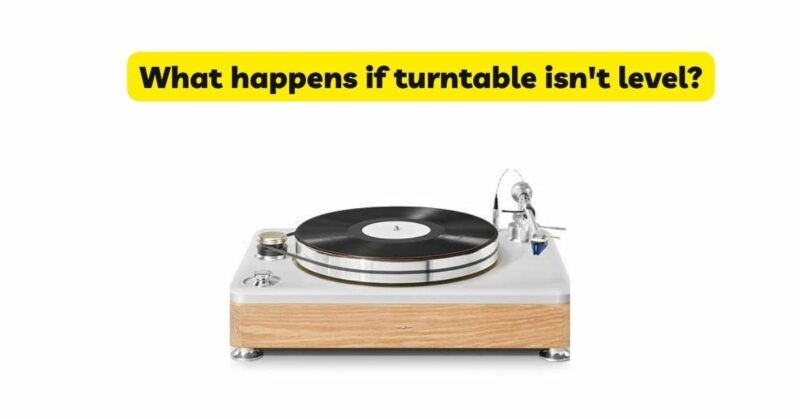A turntable is a delicate piece of audio equipment that requires careful setup and calibration to achieve optimal performance. One crucial aspect often overlooked is the levelness of the turntable. While it may seem inconsequential, an unlevel turntable can have significant consequences on sound quality, tracking accuracy, and overall performance. In this article, we will explore the impact of an unlevel turntable and help you understand why leveling is essential for maintaining the integrity of your vinyl playback.
- Uneven Tracking
One of the immediate consequences of an unlevel turntable is uneven tracking. The tonearm, which carries the stylus (needle), relies on precise alignment with the record grooves to extract accurate sound reproduction. When the turntable isn’t level, the tonearm’s angle relative to the record surface becomes uneven. As a result, the stylus may exert inconsistent pressure on the grooves, leading to uneven tracking and compromised audio fidelity. This can manifest as distorted sound, channel imbalance, or excessive skipping.
- Skewed Vertical Tracking Angle (VTA)
The vertical tracking angle (VTA) refers to the angle at which the stylus meets the record’s surface. It is crucial to maintain the correct VTA to ensure accurate tracking and optimal sound reproduction. When a turntable is unlevel, the VTA is affected, resulting in a skewed angle. A misaligned VTA can introduce distortions, frequency imbalances, and compromised imaging. The impact on sound quality may vary depending on the specific cartridge and stylus being used, but it generally leads to a suboptimal listening experience.
- Increased Wear and Damage
An unlevel turntable can accelerate wear and damage to your vinyl records. When the turntable isn’t level, the stylus makes uneven contact with the record grooves. This uneven contact can cause excessive friction, resulting in increased wear on the stylus and the record itself. Over time, this can lead to a degradation of sound quality and cause irreversible damage to your cherished vinyl collection. Proper leveling helps distribute the tracking force evenly, minimizing wear and preserving the longevity of your records.
- Excessive Vibrations and Resonance
Leveling a turntable is not just about the physical balance; it also has an impact on vibrations and resonance. When a turntable isn’t level, it may introduce additional vibrations that can interfere with the stylus’ tracking and create unwanted resonances. These vibrations can result from various sources, such as uneven weight distribution, mechanical instability, or the interaction between the turntable and its supporting surface. Excessive vibrations and resonances can degrade audio quality, introduce background noise, and detract from the overall listening experience.
- Misalignment of Tonearm Geometry
The geometry of the tonearm plays a crucial role in accurate tracking and alignment with the record grooves. An unlevel turntable can disrupt the delicate balance of tonearm geometry. The tonearm’s effective length, overhang, and offset angle may deviate from their intended values, leading to tracking errors, azimuth misalignment, and distorted sound reproduction. To maintain proper tonearm geometry and ensure accurate tracking, it is essential to level the turntable correctly.
- Compromised Anti-Skate and Anti-Vibration Systems
Most turntables are equipped with anti-skate and anti-vibration systems designed to minimize the impact of lateral forces and unwanted vibrations. However, these systems rely on a level playing surface to function optimally. If the turntable isn’t level, these systems may not work as intended, resulting in compromised anti-skate control and reduced effectiveness in damping vibrations. This can further contribute to tracking issues, subpar sound quality, and potential damage to your records.
Conclusion
Leveling a turntable is a critical step in achieving optimal performance and maintaining the integrity of your vinyl playback. An unlevel turntable can lead to uneven tracking, skewed vertical tracking angle (VTA), increased wear and damage to records, excessive vibrations and resonances, misalignment of tonearm geometry, and compromised anti-skate and anti-vibration systems. By taking the time to ensure proper leveling, you can mitigate these consequences and enjoy a superior listening experience with accurate tracking, enhanced sound quality, and prolonged life of your cherished vinyl collection.


